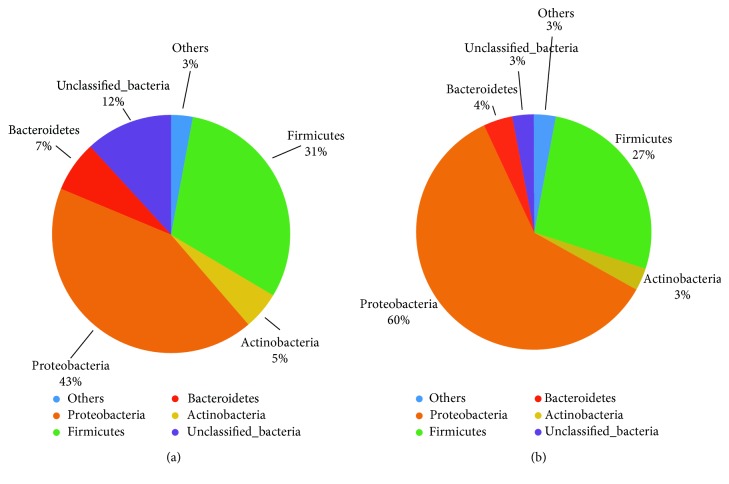Figure 3.
Relative abundances of dominant phyla in patients with dCCA (a), and the onset of common bile duct stones (b), patients from both groups contained five dominant phyla: Proteobacteria, Firmicutes, Bacteroidetes, Actinobacteria, and Unclassified_Bacteria, which accounted for 97% of the biliary microbes. Relative abundance of Proteobacteria, Firmicutes, Bacteroidetes and Actinobacteria is similar between patients with dCCA and the new onset of common bile duct stones. The dCCA group (Tumor group, T) and the new onset of CBD stones group (CBD stones group, C) denoted as “Group T” and “Group C”, respectively, in the figure.

